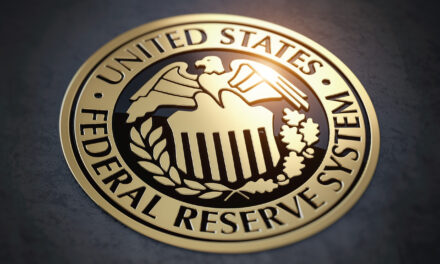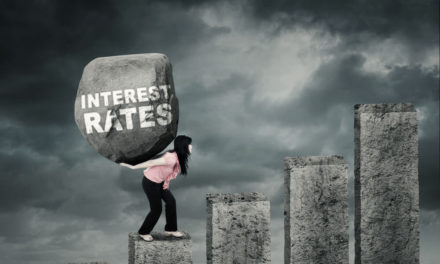The Federal Reserve is raising its key interest rate for the fourth time this year to reflect the U.S. economy’s continued strength but signaling that it expects to slow hikes next year.
The quarter-point hike, to a range of 2.25 percent to 2.5 percent, lifts the Fed’s benchmark rate to its highest point since 2008. The increase will mean higher borrowing costs for many consumers and businesses.
The Fed’s policy statement says “some” further gradual rate increases are likely. But its updated forecast projects just two rate hikes next year, down from three that the Fed had predicted in September. In another sign of fewer rate hikes ahead, the new forecast reduces the long-run level for the Fed’s benchmark rate to 2.8 percent, down from 3 percent.
The Fed has raised rates with steady regularity as the U.S. economy has strengthened. Wednesday’s was the Fed’s ninth hike since it began gradually tightening credit three years ago. But a mix of factors — a global slowdown, a U.S.-China trade war, still-mild inflation, stomach-churning drops in stock prices — has led the Fed to consider slowing its rate hikes in 2019 to avoid weakening the economy too much. It’s now likely to suit its rate policy to the latest economic data — to become more flexible or, in Fed parlance, “data-dependent.”
The Fed has so far managed to telegraph its actions weeks in advance to prepare the financial markets for any shift. But now, the risks of a surprise could rise. Next year, Chairman Jerome Powell will begin holding a news conference after each of the Fed’s eight meetings each year, rather than only quarterly. This will allow him to explain any abrupt policy shifts. But it also raises the risk that the Fed will jolt financial markets by catching them off guard.
The reasoning for any shift in the Fed’s communications, some analysts say, is that it may want to pause in its credit-tightening to assess how the economy fares in the coming months in light of the headwinds it faces. Contributing to this view was a speech Powell gave last month in which he suggested that rates appear to be just below the level the Fed calls “neutral,” where they’re thought to neither stimulate growth nor impede it. Powell’s comment suggested that the Fed might be poised to slow or halt its rate hikes to avoid weakening the economy.
For now, most U.S. economic barometers are still showing strength. The unemployment rate is 3.7 percent, a 49-year low. The economy is thought to have grown close to 3 percent this year, its best performance in more than a decade. Consumers, the main driver of the economy, are spending freely.
In such an environment, the Fed would normally keep gradually raising rates to make sure the economy didn’t overheat and ignite inflation. But this time, the risks to the economy seem to be rising. From China to Europe, major economies are weakening. President Donald Trump’s trade conflict with Beijing could, over time, undermine the world’s two largest economies.
There are also fears that the brisk pace of U.S. growth this year reflected something of a sugar high, with the economy artificially pumped up by tax cuts and a boost in government spending. The benefit of that stimulus will likely fade in 2019, slowing growth to a more modest pace. And as U.S. interest rates have risen, loan-sensitive sectors of the economy, from housing to autos, have begun to weaken.
In addition, the Fed has been gradually shrinking the vast portfolio of Treasury and mortgage bonds it built up after the 2008 financial crisis. This process is thought to have had the effect of putting further upward pressure on borrowing rates for consumers and businesses.
Economists appear unified in the view that whatever the Fed does, it won’t be influenced by the attacks Trump has made on the central bank and on Powell personally since the stock market began tumbling this fall. In a highly unusual move for a president, Trump has repeatedly and publicly denounced the Fed’s rate increases. At one point, the president called the Fed and its string of rate hikes this year “my biggest threat.”
This week, Trump fired off two tweets objecting to a likely rate hike. In one of them, he called it “incredible” that the Fed would consider raising rates again when “the outside world is blowing up around us.”
Powell, who was Trump’s hand-picked choice to be chairman, has stressed that the Fed will pursue its mandate of managing rates to maximize employment and stabilize prices, regardless of any outside criticism.
© The Associated Press. All rights reserved.




